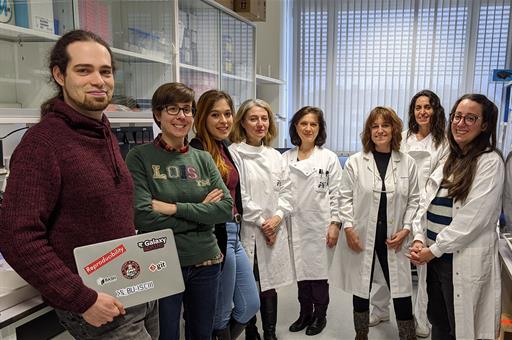Coronavirus COVID-19
National Microbiology Centre completes full sequencing of SARS-CoV2 using samples from patients in various parts of Spain
News - 2020.3.31
By providing a very complete sequence without any indeterminacies, their work will lead to better knowledge about the characteristics of this virus, analysis of specific minor changes that determine its behaviour and improved understanding of its circulation and spread through the population.
María Iglesias, a researcher at the laboratory, explained that the complete virus sequence was obtained by using new working methods streamlined and developed at the CNM to produce a complete sequence of this virus. These methods include new bioinformatics analysis processes to obtain the genome sequences of SARS-CoV-2. Based on current knowledge of the virus, SARS-CoV-2 sequences are grouped into nine separate 'clades'. Clades are phylogenetic groups that define the biological evolution of an organism and show the genetic differences between the coronaviruses circulating around the world, explaining how they act and behave. According to the results obtained by the researchers at the CNM, the Spanish sequences of SARS-CoV-2 have been linked to three different clades, referred to as S, G and V.
The sequencing study was conducted on clinical samples of the virus directly (not with laboratory cultures), with support from the Bioinformatics and Genomics Units of the CNM. It was done using clinical samples taken from the Basque Country, Madrid, Andalusia, Castile-La Mancha, Castile-Leon, Catalonia and Galicia, and reveals a map of the circulation and circulation characteristics of the virus throughout Spain.
Among other things, the analysis enables characterisation of how the different sequences published to date are interrelated, both between one another and with international sequences, and provides new knowledge about the circulation of the virus within specific regions of Spain and across the country. It also reveals more specific information, such as the inclusion of sequences coming from Andalusia in a different clade from the other Spanish sequences, which are phylogenetically linked to sequences coming from viruses analysed in English patients.
Getting to know the virus better in order to better deal with the disease
The development and validation of new large-scale sequencing methods will enable the number of Spanish sequences available in the databases coming from all regions of Spain to increase in the very near future. Obtaining this sequence of SARS-COV2 will also make it easier to study specific minor changes in the virus, better understand its spread and circulation, and gain more in-depth knowledge about its genetic characteristics.
The sequencing carried out at the CNM "is very complete and offers information without any kind of indeterminacies, which will mean it can be used in global comparison studies", explained María Iglesias. The researcher said that this sequence offers more information about the virus, something that is essential to enabling the development of new tools to improve how we deal with the disease.
All the information from the sequences obtained by the CNM is already in the public domain on various platforms, such as GISAID and Nextstrain, among others. Spain is also working on other initiatives aimed at obtaining a complete sequencing of the novel coronavirus. They include one in the Region of Madrid and a project led by the Fisabio Foundation in the Region of Valencia, which already obtained an initial sequence for the virus a few weeks ago. That sequence was obtained using three samples from a single hospital.
Non official translation





